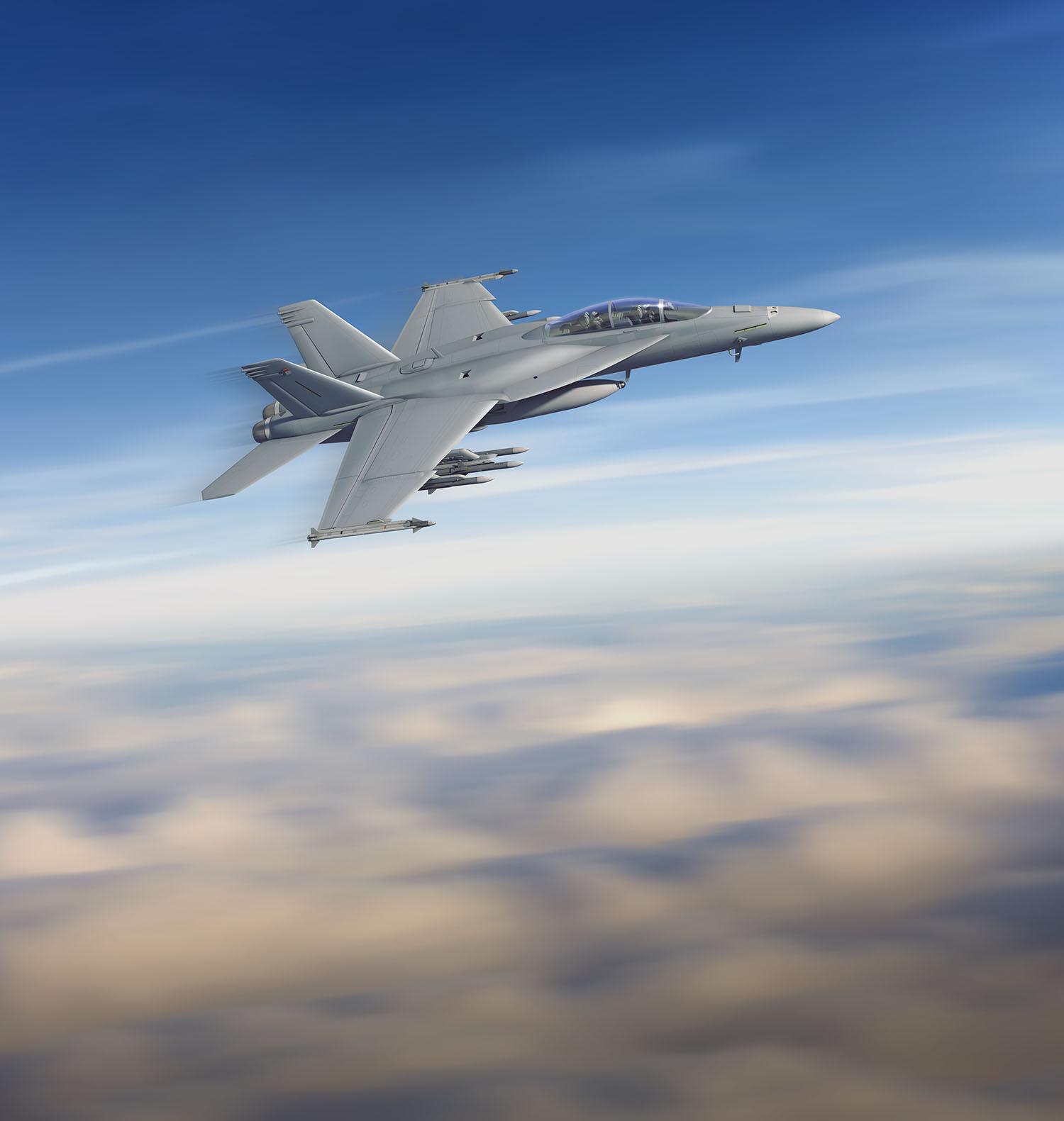US aerospace giant Boeing has delivered its first Block III F/A-18 Super Hornet to the US Navy. The defense firm has also pitched the same fighter jets, the Block III variant, to the Indian Navy.
Block III is the most advanced version of the Super Hornet and exceeds fourth-generation fighter capabilities, according to Boeing.
Loaded With A Fighter Jet Engine, American Fire-Breathing Truck Surpassess Aircraft In A Drag Race — Watch
China Factor Pushes US Air Force To Accelerate B-1B Lancer Retirement & Make Way For A Super Stealth Bomber
The F/A-18 Block III made its first flight in May 2020. The latest variant provides upgrades including enhanced network capability, longer range, reduced radar signature, an advanced cockpit and an enhanced communication system.
The Block III Super Hornets are equipped with shoulder-mounted fuel tanks, which can hold 3500 pounds (approximately 1587 kg) of additional fuel. This will help in reducing drag and will also enable the aircraft to operate for a longer duration and carry more weight.
Boeing has been converting its existing Block II Super Hornets to Block III since last year. This upgrade is also going to increase their expected lifespan from 6000 to 10,000 total flight hours.

The Advanced Cockpit System (ACS) has a 10×19 inch touchscreen that pilots can use the same way people use phones and tablets in their daily lives.
China Ends Western Monopoly In Aircraft Technology; Powers Its J-20 Stealth Fighter Jets With Indigenous WS-10C Engine
“What ACS provides to that air-crew in the jet is a flexible interface to the world of information that is in the [F/A-18] in an intuitive easy to act upon format, whether it’s what they see or touch on the screen. That allows them to take maximum advantage of all the information that is available for the mission,” said Gregory Hardy, Boeing ACS program manager.
“So with a touch screen, what that allows us to do is the entire surface is useful for information. Just like on your phones.”
The infrared search and test (IRST) system is an integral part of Block III which will detect long-range threats without depending on the radar as it might be jammed.
Boeing’s Deal With US Navy
According to Boeing’s statement on September 27, the company has recently delivered the first of the 78 contracted Block III F/A-18 Super Hornets to the US Navy. The company had received a $4 billion contract for 61 single-seat and 17 two-seat Block III F/A-18 Super Hornets in March 2020.
Two months after the deal, the aircraft made its first flight.
The company had also delivered two jets with some Block III advancements to the Navy last year. The service is also reportedly going to put its existing 540 Super Hornets through an upgrade program to make them on par with Block III jets.
Special delivery for the fleet! The first Block III F/A-18 #SuperHornet takes off for the @USNavy. This aircraft will complete the U.S. Navy flight test program before deploying to a squadron. pic.twitter.com/bn9fiG0sNJ
— Boeing Defense (@BoeingDefense) September 27, 2021
“The fleet needs capabilities to keep its edge”, US Navy F/A-18 Program Manager Capt. Jason Denney said in the statement. “Getting the first operational Block III in our hands is a great step forward in supporting our capability and readiness goals”, he added.
Boeing will continue to provide Block III capabilities to the US Navy through the mid-2030s, the company’s statement said.
Boeing’s Pitch to Indian Navy
The Indian Navy had issued an RFI (Request for Information) in January 2017 for acquiring 57 aircraft as part of its Multi-Role Carrier Borne Fighter (MRCBF) competition. Boeing had pitched its twin-seater F/A-18 Block III Super Hornet to the Indian Navy.
P-8 Poseidon: Indian Navy Bets Big On Boeing’s Maritime Recon Aircraft To Puncture China’s Swelling Military
This aircraft is capable of operating from a “ski-jump” ramp and has been described as the “enabler for secure Indo-Pacific” by Indian analysts as they showed confidence in the capabilities of the Super Hornets as well as its suitability for the Indian Navy.
As The EurAsian Times had previously reported, the F/A-18 Super Hornets have been head-to-head in competition with the naval variant of the Dassault Rafale for this deal, which was set at INR 24,000 crore due to Navy’s twin-engine preference.
“The F/A-18 Super Hornet Block III on offer to the Indian Navy (IN) is the most advanced, multi-role, frontline fighter of the US Navy (USN) and is the workhorse for the fleet, and will remain so for the foreseeable future”, Ankur Kanaglekar, Head India Fighters Sales, Boeing Defense, Space and Security, had earlier said in an interview with the Financial Express.
He re-emphasized the air superiority role of the Super Hornets and called it fully compliant with India’s INS Vikramaditya and INS Vikrant aircraft carriers.
Our F/A-18 #SuperHornet demonstrates the ability to operate from @indiannavy aircraft carriers during its successful and safe launch from a ski-jump ramp. pic.twitter.com/92V14EXV9M
— Boeing India (@Boeing_In) December 21, 2020
Talking about the two-seat variant of the Super Hornet, Kanaglekar said that it would provide the Indian Navy with various unique advancements such as “flexibility, higher utilization of the fleet, ability to embark certain missions from the carrier that benefit from having the second crew and opportunity to develop an interface between manned & unmanned systems in a carrier environment”.
He further explained that additional carrier-based naval aviation technologies which are related to the manned-unmanned interface can also be effectively operationalized through the two-seat variant.
India’s ‘White Elephant’: Why Is Indian Army Acquiring Bulky Arjun Tanks To Battle China In High-Altitude Ladakh?
Kanaglekar claims that the Super Hornet’s lesser costs per flight hour, 10,000 hours durability along the “world’s most powerful engine”, the GE F-414 engine, make the aircraft more suitable for the Indian Navy as compared to the Rafales.
- Written by Kashish Tandon/EurAsian Times Desk
- Follow EurAsian Times on Google News